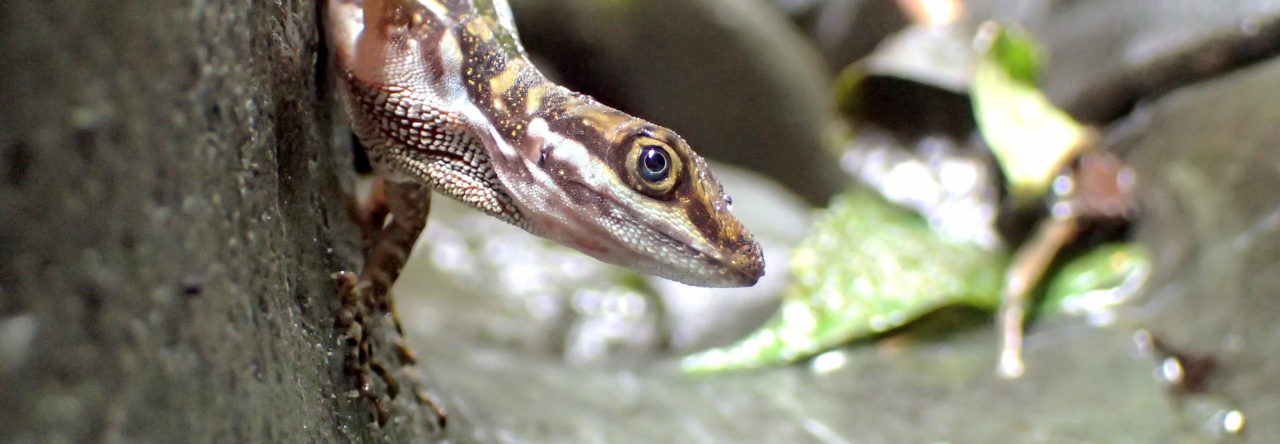Caribbean anoles are renowned for the repeated evolution of ecomorphs, the same set of habitat specialists evolving independently on each island in the Greater Antilles. But what about in mainland Central or South America, where the majority of anole species occur? Mainland anoles have received relatively little research attention, particularly with regard to questions of ecomorphology (but see Alan Pounds’ fabulous paper from 1988), primarily because mainland species are both less abundant than Caribbean taxa as well as more cryptic, making data collection much more difficult. Mainland anoles are, as a first approximation, as diverse ecologically and morphologically as Caribbean anoles, and a preliminary study found that most mainland anoles do not fit neatly into any of the Caribbean ecomorph classes. Now, in a much broader study, Schaad and Poe compared the morphology of 255 species for seven morphological characters: snout-vent length, sexual size dimorphism, femur length, head length, lamella number, snout scale number, and the ratio of tail to snout-vent length. They found that very few species are, on morphological grounds, similar to Caribbean ecomorphs. Most of the species that do have similarity are, surprisingly enough, categorized as grass-bush anoles, although ecologically most of these species do not seem to use grass-bush habitats, from what we know of their ecology. This paper represents a good step forward in our understanding of the evolutionary diversification of mainland anoles, and how it compares to what has occurred in the Caribbean. The next step will not be so simple, however—getting habitat data for all these species.
- Green Anole Perches Near Ground to Take Advantage of a Mosquito Trap - February 26, 2025
- Third Mexican Amber Anolis Lizard Discovered - January 14, 2025
- Anolis Lizard Research Paves the Way for Advances in Treatment of Human Prostate Cancer - January 10, 2025



1 Pingback